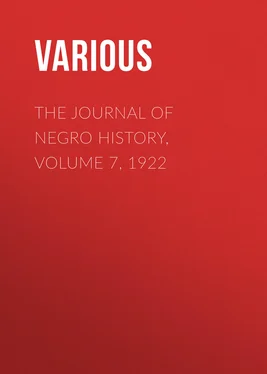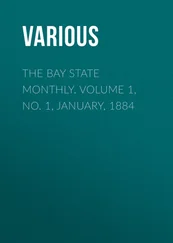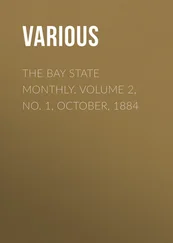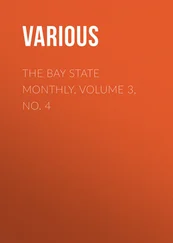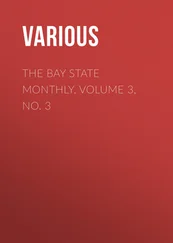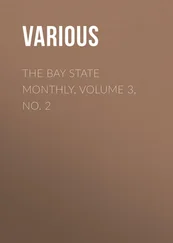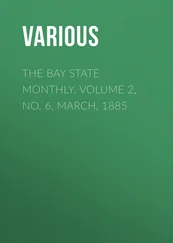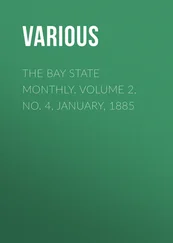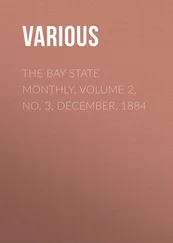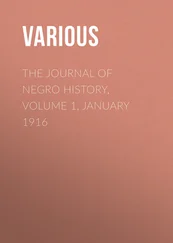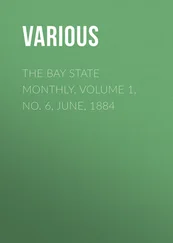Various - The Journal of Negro History, Volume 7, 1922
Здесь есть возможность читать онлайн «Various - The Journal of Negro History, Volume 7, 1922» — ознакомительный отрывок электронной книги совершенно бесплатно, а после прочтения отрывка купить полную версию. В некоторых случаях можно слушать аудио, скачать через торрент в формате fb2 и присутствует краткое содержание. Жанр: foreign_antique, periodic, История, foreign_edu, на английском языке. Описание произведения, (предисловие) а так же отзывы посетителей доступны на портале библиотеки ЛибКат.
- Название:The Journal of Negro History, Volume 7, 1922
- Автор:
- Жанр:
- Год:неизвестен
- ISBN:нет данных
- Рейтинг книги:3 / 5. Голосов: 1
-
Избранное:Добавить в избранное
- Отзывы:
-
Ваша оценка:
- 60
- 1
- 2
- 3
- 4
- 5
The Journal of Negro History, Volume 7, 1922: краткое содержание, описание и аннотация
Предлагаем к чтению аннотацию, описание, краткое содержание или предисловие (зависит от того, что написал сам автор книги «The Journal of Negro History, Volume 7, 1922»). Если вы не нашли необходимую информацию о книге — напишите в комментариях, мы постараемся отыскать её.
The Journal of Negro History, Volume 7, 1922 — читать онлайн ознакомительный отрывок
Ниже представлен текст книги, разбитый по страницам. Система сохранения места последней прочитанной страницы, позволяет с удобством читать онлайн бесплатно книгу «The Journal of Negro History, Volume 7, 1922», без необходимости каждый раз заново искать на чём Вы остановились. Поставьте закладку, и сможете в любой момент перейти на страницу, на которой закончили чтение.
Интервал:
Закладка:
49
In the summer of 1874 there was circulated among the teachers of this school a petition in behalf of Miss Bertha Chapelle, who was chosen to teach the second term of the high school. In this way the last month of the session was taught with but one scholar attending. In the year 1875 Miss Mollie Berry was chosen to teach this school, and she was followed in 1876 by Mr. Frank C. James, who had taught previously the first public school in the county at Kanawha City, in 1866. He was succeeded in 1877 by Mr. Pitt Campbell, who was followed by Mrs. Bettie Cabell in 1878. She was in turn succeeded by Mr. Brack Cabell the following year. In 1880 the school was moved to the site now occupied by the two-room village school, and was called the Piney Road School. Mr. J. B. Cabell was chosen teacher for the first year.
In 1881 Miss Emma Ferguson was selected teacher. Miss Ferguson, now Mrs. Emma Jones, is still an active teacher. In 1882 Miss Addie Wells taught this school. She was followed by Miss Annie Cozzins. In 1884 W. C. Cabell was in charge. He was succeeded in 1885 by Otho Wells and he by Mrs. Julia Brown in 1886.
50
These facts were obtained from old citizens and from local records.
51
For a more detailed account, see the History of Education in West Virginia, pp. 272-273.
52
These facts were obtained from local records.
53
These facts were obtained from J. W. Robinson, the principal of the school.
54
The following resolutions adopted at the meeting of the Teachers' Association in 1891 were suggestive:
1. That all persons of high literary standing, who are not teachers, be admitted as honorary members.
2. That we highly commend the committee of arrangements for their success in bringing together so many teachers and professional persons, and for making the meeting of so much importance and interest.
3. That we recognize in the death of Prof. W. B. Ross, A.M., who died at his post at Greenville, Texas, August 20, 1891, the loss of one of our ripest scholars and most efficient educators.
4. That we tender our thanks to Hon. B. S. Morgan, State Superintendent, for the interest he manifested in the Association and the able address he delivered before us.
5. That the Summer School for Teachers, as has been taught by Professors H. B. Rice and Byrd Prillerman, has been a means of elevating the standard of our teachers, and should be continued.
6. That we indorse the action of the State Legislature in establishing the West Virginia Colored Institute, and that we will do all in our power to make this school a success.
7. That we make The Pioneer the official organ of the Association.
8. That we tender our thanks to the Pastor and Congregation for the use of this Church, and also to Mr. I. C. Cabell for his valuable services as organist.
The Committee was composed of J. R. Jefferson, Mary M. Brown, Dr. W. T. Merchant, C. H. Payne, Miss Luella Ferguson and Atty. M. H. Jones.
55
This account of the early meetings of the West Virginia Teachers' Association is found in the Twelfth Biennial Report of the State Superintendent of Schools of West Virginia, 1895-1896, pp. 111-113.
56
At the Huntington meeting in 1892 an original poem on Thanksgiving Day was read by Miss Leota Moss. The poem was written by Paul Lawrence Dunbar for this special occasion at the request of Byrd Prillerman, the president. The price paid Dunbar for this service was $2.00.
57
The more recent record of the West Virginia Teachers' Association was given by Byrd Prillerman, who served that body nine terms as president.
58
This dissertation was written from facts obtained from these churches and their pastors and verified by reference to books and newspapers. The most important source was the Special Report of the U. S. Commissioner of Education on the Schools of the District of Columbia , pp. 197 et seq.
59
Special Report of the United States Commissioner of Education on the Schools of the District of Columbia , pp. 195-197.
60
Special Report of the United States Commissioner of Education on the Schools of the District of Columbia.
61
After the Civil War "Little Ebenezer" entered upon a new career. The white pastors who up to this time had been serving this congregation were replaced by ministers of color, the first one being Noah Jones. About 1874 the property of the church was transferred from the white church to the local organization. Placed upon this advantageous basis, the success of this congregation soon entitled that church to rank among the leading Negro churches of the city. C. G. Keyes built the first church edifice. Under C. G. Walker, who came later, there were added so many more new members that a new building was necessary to accommodate the congregation. Then came W. H. Draper, Alexander Dennis, and finally Dr. M. W. Clair. Using the plans devised by Dr. M. W. Clair, now Bishop of the M. E. Church, John H. Griffin built the edifice which is today used by the Ebenezer Church. This church was later served by W. T. Harris, E. W. S. Peck, and more recently by the efficient S. H. Brown and W. H. Dean, who did much to promote the religious life and expand the work of the present flourishing congregation now under the direction of J. W. Waters.
62
From records preserved by Miss H. H. Beason.
63
The time for radical changes was approaching when the political discussions of the time were affecting Washington and all elements of its population. It was not until the Civil War was in its third year that Mt. Zion felt the change, and this was by the organization of the Washington Annual M. E. Conference in 1864. Had it not been effected at this time, it is doubtful if the M. E. Church would have been able to make much headway in Virginia with the Negro members who up to that time were counted a part of the M. E. South, worshipping in the same edifice as the whites and under such conditions as to give rise to little or no friction. The Civil War was in its last year, and there had been no opportunity before this time for the M. E. Church to secure Negro members to any extent. The A. M. E. Church, moreover, had already got a foothold in Norfolk and Portsmouth where the Union armies had triumphed, as early as 1862, and in 1865 the A. M. E. Zion Church secured a large following with valuable property in Petersburg.
Bishop Levi Scott, who organized the Washington Conference, was not concerned primarily for such churches in Baltimore as Sharp Street, Asbury, and Mt. Zion in Washington, but he was looking beyond the Potomac. At any rate he organized with four members and in 1864 sent to Mt. Zion Rev. John H. Brice, who thus became their first Negro pastor. Mt. Zion then had a membership of 317. Rev. Mr. Brice was reappointed in 1865. He was succeeded in 1866 by Rev. N. W. Carroll, whose career as an aggressive minister is that of one of the very first in his denomination. Rev. Mr. Carroll served three years and was an elder when his successor, Rev. Henry R. Elbert, was appointed in 1869.
Following Mr. Elbert came Rev. G. T. Pinkney, under whose administration the planning of a new structure first took form, and $1,500 for the purpose was deposited in the Freedmen's Bank. Rev. Mr. Pinkney was succeeded by Rev. George Lewis, who raised $1,600 for the building fund. Then came the Rev. Benjamin Brown, one of the useful pastors of the Negro church, a man whose reputation was coextensive with the confines of the Washington Conference, which at that time included Virginia and West Virginia as well as Maryland and the District of Columbia.
Читать дальшеИнтервал:
Закладка:
Похожие книги на «The Journal of Negro History, Volume 7, 1922»
Представляем Вашему вниманию похожие книги на «The Journal of Negro History, Volume 7, 1922» списком для выбора. Мы отобрали схожую по названию и смыслу литературу в надежде предоставить читателям больше вариантов отыскать новые, интересные, ещё непрочитанные произведения.
Обсуждение, отзывы о книге «The Journal of Negro History, Volume 7, 1922» и просто собственные мнения читателей. Оставьте ваши комментарии, напишите, что Вы думаете о произведении, его смысле или главных героях. Укажите что конкретно понравилось, а что нет, и почему Вы так считаете.
